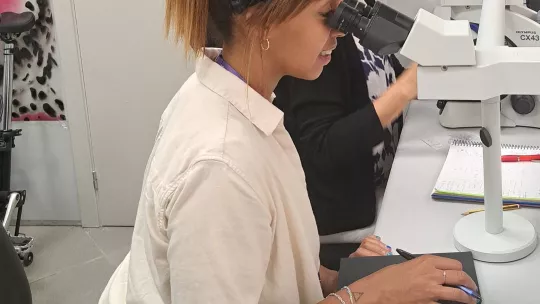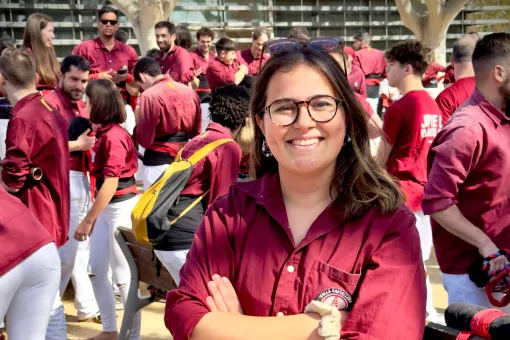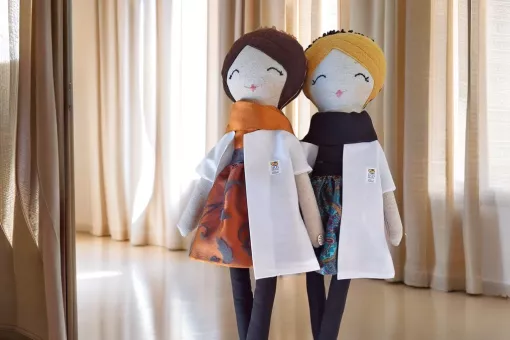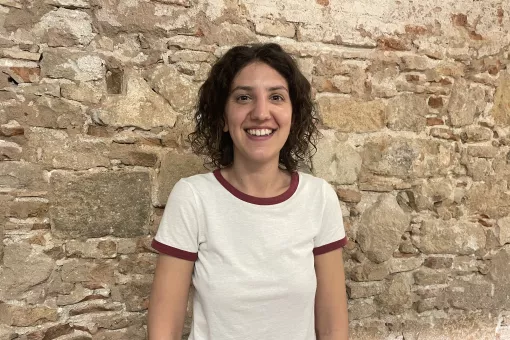Images
Laura Benetton is our new Artist in Residence. Originally from Padua (Italy), and now living in London, she is a multidisciplinary contemporary artist working at the intersection of art and science. Laura's work is informed by scientific phenomena such as bioluminescence and movement science.
Generative in nature, her artwork spans a wide range of media, including performance, light installation, sculpture, and bio-art. It's held in private and public collections and is commissioned by art consultants and galleries in London and abroad.
Laura, could you share some insights into your professional background?
My artistic training was in Venice. Over 5 years, I studied everything from anatomy and aesthetics to techniques. The degree focused on traditional painting.
Ironically, at secondary school, my focus was on languages and chemistry. But that wasn’t for me, my mind and my imagination were always working. I felt deep down that I wanted to become an artist.
What did you do after your artistic training in Venice?
The same year I finished my degree (2008), I won an Artist in Residence grant for the Arnaldo Pomodoro Foundation. I spent three months in Urbino, Italy, studying metal sculpture. Then I travelled a bit and in 2010 I settled in London.
I started to exhibit regularly from 2012 onwards. I began at the Italian Embassy and then I did a few collective exhibitions. In 2016, I had the opportunity to have an exhibition, “Tomorrow’s child”, at the Houses of Parliament. That was a major achievement!
And from there, I was represented by different galleries in London and I started to exhibit extensively there but also in Paris, NY, Venice and Hong Kong.
How do you think your evolution as an artist was at that time?
When I finished my degree, my paintings were more figurative. Then I started to develop my own style and everything became more abstract. I started to work on movement and dynamicity and I looked more into the natural world.
In 2010, when I arrived in London, I started to work at the Natural History Museum and I was influenced by the collections there. The colours were off the scale!
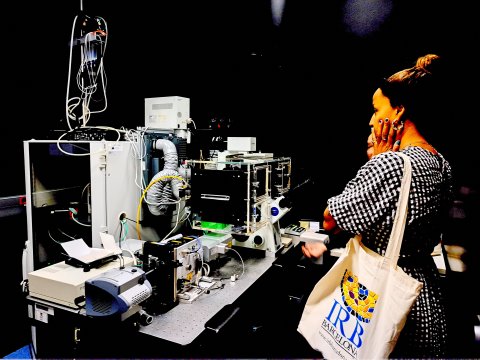
How hard is it to leave university and build a career as an artist?
Becoming an artist is hard. It’s about personality and about being stubborn. It's a highly competitive field and making art a full-time job is not easy. It’s about believing in what you want to share in terms of message and content.
When you finish your degree you are an academic artist but you don’t have a style. To be recognised and have an artistic career, you need to have a style that sets you apart from others.
"Becoming an artist in residence at IRB Barcelona is a unique opportunity to further my knowledge of science and to interact with talented and inquisitive individuals from a completely diverse work discipline".
So what is your style? Tell us about your art.
It's abstract. It's inspired by movement, light and nature. There is a lot of science in my work. At first, people are impacted by the aesthetic… lots of colours. But then they ask, “What is it about?” And that is the challenging part.
In the beginning, I approached my work by looking at the colours of butterflies from the rainforest… vivid colours… I was fascinated by them. People focus on primary colours, but between these, there is an entire spectrum that is overlooked.
So what about the science element?
The movement and dinamicity of bird wings have always fascinated me. Birds fly by using the pushing force of air pressure to create wing lift, and this is achieved by the physical law known as the Bernoulli Principle. Things that fly generally follow a diagonal path of movement. I delved into the meaning of parallel lines to express that movement, which is conveyed in many of my paintings.
How do you think has your art evolved?
There has been a natural evolution over the last 4 to 5 years. In 2019, I was awarded a month-long artist residency in Shenzhen, China. This city is a tech hub. I developed my work on LED light further and I even did an LED light sculpture!
Using LED lighting has been challenging because it has involved technicalities in terms of plugs and mechanisms and I do everything myself.
What is your creative process like?
My creative process has changed over time. In the beginning, it was a disciplined process, like a 9-to-5 in the studio. The more I did, the more my work flowed. It was easy to paint.
Then, when I started to sell and have exhibitions, something happened… it was like a realisation and asking “What’s next?”. My work required me to evolve and then the creative process changed. I moved away from a focus on painting and exhibitions to concentrate on one or two projects a year.
These projects are often in partnership with a gallery. In 2021, I did a huge solo show in Milan called Metamorphosis. It was a retrospective exploration of my work… my evolution from painting to working with LED lights.
I did my Masters from 2020 to 2022. During that period, I was aware that I had to step things up another level…my goals changed. Some people are comfortable being commercial artists while others, like me, have had a completely different career in contemporary art. I consider myself multidisciplinary and I love to collaborate with others. I want to continuously evolve as an artist. Working alongside institutions and museums and sharing my work has allowed me to do just that.
Will your artistic evolution process encompass something related to digital art at any point?
I have been thinking about this because I have processed lots of images through my work in labs in recent years. In fact, one of the works I submitted for this open call at IRB Barcelona was a digital image of bacterial growth and light emission. Also, I think cross-fertilization with science would provide an opportunity to create some videos with sound.
Where do you think technology is leading artists?
I have heard about galleries devoting metaverse space and exhibiting some metaverse artists there. But I don't know how it works. I'd like to think there's a link between the metaverse and the physical world, and I believe things are moving in that direction.
What do you want to explore at IRB Barcelona and have you identified the labs you want to work with?
I previously worked with bacteria and bioluminescence and I want to explore light further. The research community at the Institute works a lot with green fluorescent protein (GFP), a protein produced by a jellyfish that emits bioluminescence in the green zone of the visible spectrum.
I have been in contact with the Histology Facility, Microscopy Facility, and groups working with flies and organoids—all of them are using GFP but in different ways.
I am planning to work a lot with images and videos but I will also be creating something physical.
What do you hope to get out of the experience at IRB Barcelona?
Becoming an artist in residence at IRB Barcelona is a unique opportunity to further my knowledge of science and to interact with talented and inquisitive individuals from a completely diverse work discipline. This interaction will allow me time to ponder, conduct research, and develop a new ambitious, and original art installation.
I hope that the outcome of this residency will pave the way for other opportunities. It will certainly strengthen future applications for residencies in science institutes.
About IRB Barcelona
The Institute for Research in Biomedicine (IRB Barcelona) pursues a society free of disease. To this end, it conducts multidisciplinary research of excellence to cure cancer and other diseases linked to ageing. It establishes technology transfer agreements with the pharmaceutical industry and major hospitals to bring research results closer to society, and organises a range of science outreach activities to engage the public in an open dialogue. IRB Barcelona is an international centre that hosts 400 researchers and more than 30 nationalities. Recognised as a Severo Ochoa Centre of Excellence since 2011, IRB Barcelona is a CERCA centre and member of the Barcelona Institute of Science and Technology (BIST).

